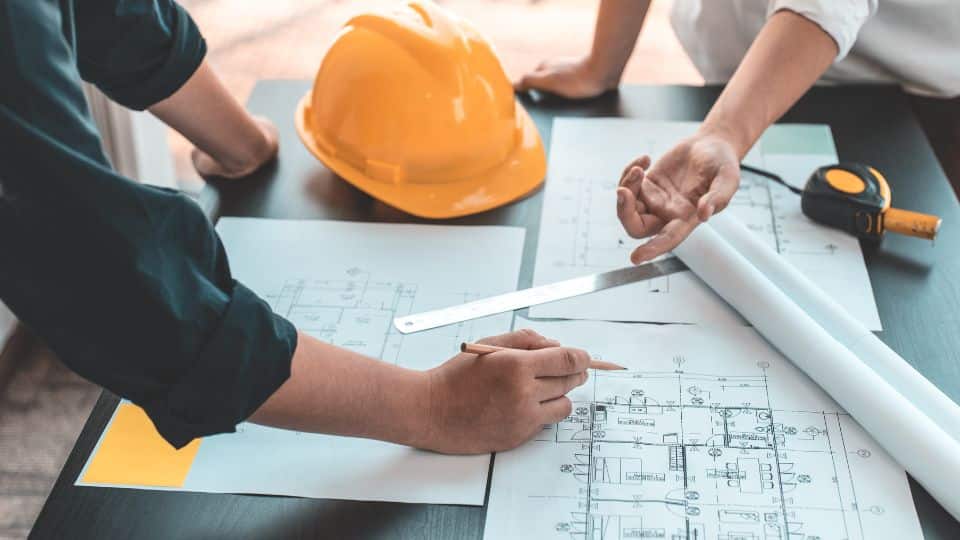Understanding the Diverse Career Paths Available for Aspiring Architect
As an aspiring Architect, you have a globe of occupation courses waiting for you. Each course uses one-of-a-kind obstacles and possibilities to use your imagination and technological know-how. Whether you're drawn to typical design or the subtleties of lasting layout, there's a particular niche that straightens with your interests. Recognizing these varied alternatives can form your professional trip, however which instructions will you select to check out first?
Typical Design: Creating Buildings and Frameworks
Typical architecture focuses on developing structures and frameworks that blend capability with aesthetic allure. Your designs can mirror social heritage, showcasing regional customs while meeting modern needs.
You'll develop skills in drafting, model-making, and site analysis, enabling you to visualize and interact your concepts properly. Engaging with clients, you'll need to comprehend their vision and convert it into practical layouts.
Additionally, constructing codes and sustainability methods are vital in your job, ensuring your frameworks are eco friendly and risk-free. As you expand in your profession, you'll find chances in household, industrial, or perhaps repair jobs, each offering distinct difficulties. Accepting conventional architecture leads the way for a fulfilling occupation that pays tribute to the past while shaping the future.
Urban Planning: Forming Areas and Public Spaces
As an ambitious Architect, you can play an essential function as an urban organizer, transforming how neighborhoods connect and work. By using community interaction methods, you'll assure that homeowners have a voice fit their environment. And also, integrating sustainable style concepts will aid produce rooms that not only fulfill today's demands yet additionally secure the future.
Duty of Urban Planners
While many may assume of architects as the sole visionaries behind structures, urban planners play a vital role in forming the broader landscape of communities and public areas. By collaborating with numerous stakeholders, you'll help make parks, transport systems, and domestic locations that advertise social communication and ease of access. Your expertise in spatial layout and area dynamics enables you to picture future development while preserving social heritage.
Neighborhood Interaction Techniques
Effective neighborhood involvement methods are vital for city planners to guarantee that the voices of locals are heard and valued in the planning procedure. To promote purposeful dialogue, you must focus on open online forums and workshops where neighborhood members can share their concepts and issues. Use surveys and social networks to reach a wider audience, guaranteeing varied point of views are included. Collaborating with local organizations can boost trust and help with deeper links. It's crucial to supply clear information regarding proposed tasks and decision-making procedures, allowing homeowners to really feel enlightened and equipped. By actively integrating and paying attention feedback, you'll develop areas that reflect the neighborhood's needs, eventually bring about more successful and sustainable urban environments. Embrace transparency and continuous discussion for lasting influence.
Sustainable Style Concepts
When making city areas, integrating lasting layout concepts is important for creating settings that flourish both environmentally and socially. Think about integrating green spaces, like yards and parks, to boost biodiversity and improve air quality.
Creating with water preservation in mind is likewise essential-- think of rain gardens and permeable surfaces to take care of stormwater. Entailing neighborhood participants during the planning procedure guarantees that the areas you create satisfy their demands and motivate social communication. By welcoming these principles, you'll add to dynamic, lasting urban landscapes that benefit everybody.

Landscape Architecture: Developing Sustainable Exterior Settings
As you explore landscape style, you'll find essential design principles that develop attractive and useful outdoor rooms. Sustainable practices play a crucial function in making certain these settings grow while decreasing environmental influence. And also, you'll discover a selection of job possibilities that enable you to make an actual difference in exactly how people interact with nature.
Layout Principles in Landscape
Understanding layout concepts in landscape style is essential for producing lasting outdoor environments that integrate with nature. You'll need to consider aspects like proportion, equilibrium, and range to ensure your designs really feel cohesive and inviting. Additionally, pay attention to seasonal changes, making with products that match the environments year-round.
Sustainable Practices Summary
Lasting techniques in landscape design not just concentrate on appearances but additionally focus on ecological wellness and resource preservation. By incorporating native plants, you improve biodiversity and reduce the need for chemical plant foods and pesticides. Implementing effective watering systems helps save water and decreases overflow, safeguarding neighboring communities. You can design rooms that advertise dirt health and wellness, such as practicing and using organic materials permaculture principles. Additionally, integrating environment-friendly framework, like rain yards and permeable sidewalks, aids in stormwater management and decreases urban heat. When you create outdoor environments with sustainability in mind, you contribute to a healthier earth and supply spaces that foster community connection. Eventually, these practices guarantee your designs benefit both people and the environment for several years ahead.
Career Opportunities Exploration
With a strong foundation in lasting techniques, landscape architecture uses a selection of occupation courses that allow you to make a meaningful impact on the atmosphere. Urban planners usually team up with landscape architects to create eco-friendly areas in urban setups, boosting city livability. If you're passionate concerning education and learning, consider ending up being a landscape architecture educator, motivating future generations.
Sustainable Design: Concentrating On Eco-Friendly Practices
As you have a peek at these guys discover your job in architecture, welcoming eco-friendly techniques can set you apart in a competitive field. Sustainable style focuses on producing buildings that decrease ecological impact while improving passenger well-being. By including eco-friendly products, energy-efficient systems, and sustainable structure methods, you'll add to a greener future.
Beginning by obtaining knowledge of environment-friendly qualifications like LEED or BREEAM, which can boost your qualifications. Take into consideration exactly how all-natural light, ventilation, and thermal effectiveness can enhance design. Collaborate with designers and environmental experts to introduce solutions that reduce waste and conserve sources.
Do not forget the value of neighborhood involvement-- appealing local stakeholders can motivate designs that balance with the environment. As customers increasingly focus on sustainability, your knowledge in green techniques will not just draw in projects yet also satisfy your passion for accountable design. Embrace this important aspect of the career, and enjoy your job grow.
Historic Conservation: Protecting and Bring Back Social Heritage
While you start on your building journey, think about the vital duty of historical conservation in maintaining our cultural heritage. This field concentrates on the defense and restoration of considerable buildings, sites, and frameworks that tell the tales of our past. By taking part in historic preservation, you'll aid safeguard the building legacy that forms area identity.
As a historic conservation Architect, you'll examine historical importance and analyze the problem of structures. You'll function closely with historians and preservationists to assure authentic repair methods are utilized. This career path permits you to mix creative thinking with study, allowing you to make options that value initial materials and craftsmanship.
Your job not only contributes to sustainability by recycling existing buildings but also cultivates a sense of pride within neighborhoods. Accepting this path will certainly assist you end up being a guardian of history, protecting the tales and visual appeals that enrich our lives.
Interior Style: Enhancing Indoor Spaces
Historic preservation and indoor design both share a dedication to enhancing the developed environment, however they concentrate on different facets. While historical conservation highlights keeping a structure's historic and social value, indoor style absolutely nos in on enhancing interior areas for capability and aesthetic appeals.
As an ambitious Architect, you'll find that interior design allows you to mix imagination with technological skills. You'll make areas that not only look excellent however additionally advertise comfort and effectiveness. This area involves recognizing just how light, color, and products communicate within a room, affecting mood and use.
You'll work with numerous jobs, from household homes to business workplaces, guaranteeing that each setting meets the demands of its residents. By prioritizing individual experience, you can change insides into practical and motivating spaces, making a significant impact on exactly how individuals communicate with their surroundings. Accept the possibility to enhance interior environments and shape the method individuals function and live.
Industrial Layout: Merging Performance With Aesthetics
Commercial layout plays an essential duty in developing products that flawlessly mix aesthetic appeals with capability, making sure that what you use everyday is not just aesthetically enticing however also useful. As an aspiring Architect, you could involve yourself in this field, concentrating on designing whatever from furniture to customer electronic devices. Your work involves understanding individual needs, products, and producing processes, permitting you to develop ingenious solutions that enhance everyday experiences.
In industrial design, you'll typically work together with marketing professionals, designers, and makers, making sure that your designs are not only lovely yet likewise viable. This career course provides a vibrant atmosphere where creative thinking satisfies practicality, making it a fulfilling option for architects interested in forming the products of tomorrow.
Regularly Asked Questions
What Educational Credentials Do I Need to End Up Being a Designer?
To become a designer, you'll need a specialist degree in design, commonly a Bachelor's or Master's. Furthermore, you'll need to complete an internship description and pass the Architect Registration Exam to exercise lawfully.
Are There Qualification Needs for Different Building Profession Paths?
Yes, there're qualification needs for various architectural courses. Architect. You'll require to pass examinations, complete try this internships, and often seek specialized training, depending on your selected focus, like landscape architecture, city design, or historical preservation
What Software Application Skills Are Vital for Architects Today?

Just How Can I Gain Practical Experience While Examining Design?
You can get practical experience by interning at building companies, getting involved in layout competitions, offering for neighborhood tasks, or collaborating with classmates on real-world tasks. These chances improve your abilities and construct important links in the industry.
What Job Opportunities Exist Outdoors Standard Architecture Firms?
You can discover different work chances outside conventional design companies, like city planning, interior decoration, landscape architecture, building and construction management, real estate development, or perhaps roles in sustainability consulting. Each offers unique obstacles and benefits.
Whether you're drawn to traditional style or the nuances of sustainable style, there's a niche that lines up with your rate of interests.When making city areas, integrating sustainable design principles is vital for creating environments that thrive both ecologically and socially.As you explore landscape design, you'll find essential style principles that create useful and beautiful outside rooms.Understanding layout principles in landscape design is essential for creating lasting outdoor settings that harmonize with nature.In industrial design, you'll often collaborate with producers, marketing professionals, and engineers, making sure that your layouts are not only lovely but likewise practical.